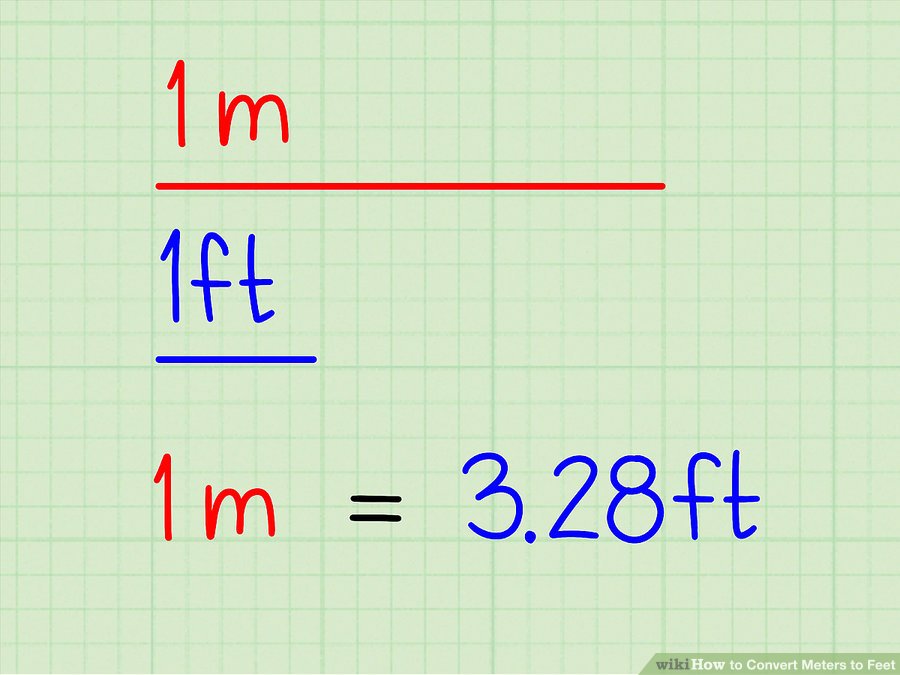Everyone is familiar with the meter and feet. Furthermore, we use these units to measure length. But there is a difference between both the units as the foot is the average distance between the foot and meter is a different unit. In this topic, we will discuss how to change or measure meter to feet.
What is Meter?
Meter is an International System of Unit (SI unit) of displacement or length. In addition, one meter equals to around 39.37 inches and one foot approximately equal to the 0.3048 meters. In addition, a meter consists of 100 centimetres.
Furthermore, the meter and its relations are used to specify wavelengths of an Electromagnetic Field/s. Most noteworthy, it is equal to the distance travelled by light in a vacuum in 1 / 29,97,92,458 seconds or about 3.33564095 × 10-9 of a second.
Besides, it can be defined as the one ten-millionth (0.0000001 or 10-7). The SI unit symbol of the meter is m.

Source: WikiHow
What is Foot?
The foot is also a unit of measure in the imperial and US customary systems of measurement. In addition, the exact value of foot is around 0.3048 meter. Besides, a foot contains 12 inches and 3 feet is considered around the yard.
If we talk about the historical value of foot then the local system uses this unit. Most noteworthy, the Romans, French, Greeks, English, and Chinese use this system. Besides, the length of foot varies from city to city and country to country.
Furthermore, the length of the foot is in between 250 to 335 mm (millimetre). Also, its symbol is ft.
Meter to Feet Conversion
For converting meter to feet firstly we should know the difference between their lengths. That is one meter is equal to 3.28 feet and one foot is equal to 12 inches as per rule. So, to convert meter to feet just simply multiply the number of meter to the value of feet per meter.
That is
Conversion of Meter into foot = Number of meter / Number of feet per meter.
Example: Convert the following meters into feet?
Meter: A- 15 m, B- 5.5 m, C- 6.07 m, D- 12.96 m
Solution:
A = 15 m × 3.28 ft. = 49.2 ft.
B = 5.5 m × 3.28 ft. = 18.04 ft.
C = 6.07 m 3.28 ft. = 19.91 ft.
D = 12.96 m × 3.28 ft. = 42.52 ft.
In all the cases mentioned above the value of feet is derived by multiplying the value of meter to value of feet per meter.
Meters to Inches
Besides the question can be simplified again to know the value of inches. Furthermore, we know that one foot consists of 12 inches and if we multiply the value of digits after decimal then we will get the value of inches. Taking the answer of A, B, C, and D into consideration the value of inches will be:
Solution:
A = 49.2 ft. = 49 feet and 0.2 inches (0.2 × 12 = 2.4 inches) = 49 feet 2.4 inches.
B 18.04 ft. = 18 feet and 0.4 inches (0.4 × 12 = 4.8 inches) = 18 feet 4.8 inches.
C = 19.91 ft. = 19 feet and 0.91 inches (0.91 × 12 = 10.92 inches) = 19 feet 10.92 inches
D = 42.52 ft. = 42 feet and 0.52 inches (0.52 × 12 = 6.24 inches) = 42 feet and 6.24 inches
In all the above cases we simply multiple the decimal values by 12 (that is one foot).
Solved Question or You
Question. What is the exact value of 32.69 m into the foot?
A. 102.63 ft.
B. 105.65 ft.
C. 107.25 ft.
D. 109.31 ft.
Answer. The correct answer is option C. If we multiply the value of 32.69 m with the value of feet per meter then we will get 107.250 ft.






I was looking for this answer, “As all the other are mild steel means they have high resistance while stainless steel is a hard steel that has low resistance.” stainless steel has low resistance?
Low resistance to what type of load, impact or tensile load. With change in low type, property of steel may very. And, also, Will stainless steel have high yield strength?